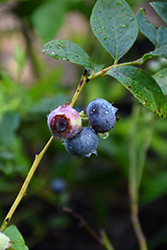Fri & Sat 8am - 8pm
Sun 8am - 7pm
Anytown, USA 12345
fax: 261.787.0463
e-mail: info@successgc.com


Plant Finder

Georgia Gem Blueberry
Vaccinium 'Georgia Gem'
Height: 7 feet
Spread: 6 feet
Sunlight:
![]()
![]()
Hardiness Zone: 7a
Group/Class: Southern Highbush Blueberry
Description:
A self-pollinating hybrid loved for its pretty bell-shaped flowers in early spring and sweetly-flavored steel blue fruit in late spring; bushy with high heat tolerance; blueberries need highly acidic soil, perfect drainage and mulch, plant with peat moss
Edible Qualities
Georgia Gem Blueberry is a medium-sized shrub that is commonly grown for its edible qualities. It produces large clusters of navy blue round berries with silvery blue overtones which are usually ready for picking from late spring to early summer. The berries have a sweet taste and a juicy texture.
The berries are most often used in the following ways:
- Fresh Eating
- Cooking
- Baking
- Preserves
Features & Attributes
Georgia Gem Blueberry features dainty clusters of white bell-shaped flowers with shell pink overtones hanging below the branches in early spring. It has dark green foliage with hints of blue. The glossy oval leaves turn an outstanding orange in the fall. It features an abundance of magnificent navy blue berries with silvery blue overtones from late spring to early summer. The smooth yellow bark adds an interesting dimension to the landscape.
This is a multi-stemmed deciduous shrub with an upright spreading habit of growth. Its average texture blends into the landscape, but can be balanced by one or two finer or coarser trees or shrubs for an effective composition. This is a relatively low maintenance plant, and is best pruned in late winter once the threat of extreme cold has passed. It is a good choice for attracting birds to your yard. It has no significant negative characteristics.
Aside from its primary use as an edible, Georgia Gem Blueberry is sutiable for the following landscape applications;
- Orchard/Edible Landscaping
Planting & Growing
Georgia Gem Blueberry will grow to be about 7 feet tall at maturity, with a spread of 6 feet. It tends to be a little leggy, with a typical clearance of 2 feet from the ground, and is suitable for planting under power lines. It grows at a medium rate, and under ideal conditions can be expected to live for approximately 30 years. While it is considered to be somewhat self-pollinating, it tends to set heavier quantities of fruit with a different variety of the same species growing nearby.
This shrub is typically grown in a designated area of the yard because of its mature size and spread. It does best in full sun to partial shade. It does best in average to evenly moist conditions, but will not tolerate standing water. This plant should be periodically fertilized throughout the active growing season with a specially-formulated acidic fertilizer. It is very fussy about its soil conditions and must have sandy, acidic soils to ensure success, and is subject to chlorosis (yellowing) of the foliage in alkaline soils. It is quite intolerant of urban pollution, therefore inner city or urban streetside plantings are best avoided, and will benefit from being planted in a relatively sheltered location. Consider applying a thick mulch around the root zone in winter to protect it in exposed locations or colder microclimates. This particular variety is an interspecific hybrid.
